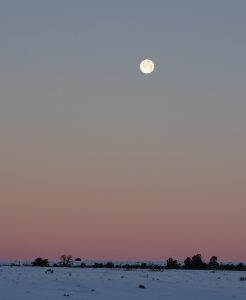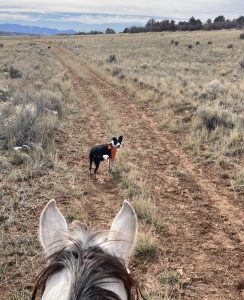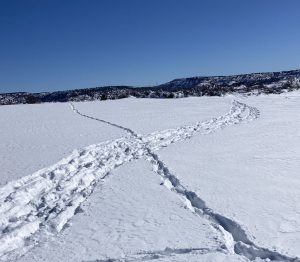Editor’s Note: This essay in an alternative to a piece written by Maddy Butcher in the Washington Post.
In the video, a mountain biker confronts a man riding an adaptive e-bike, berating him for being on the trail, and telling him he’s not allowed.
In fact, he is allowed. In Indiana, where the para-athlete Tom Morris, was riding, adaptive e-bikers are allowed on state trails.
The able-bodied biker was predictably vilified on social media. Tense scenes of discrimination like this are getting more common as outdoor spaces become increasingly crowded with diverse, yet niche-focused users. In some of the world’s most stunning open spaces, under exquisite skies and epic panoramas of mountains and meadows, it’s ugly.
 Corporations and governments seem to be making progress on inclusivity. But the outdoor recreation sphere, which consists of roughly 165 million people on about 700 million acres, with a robust, health-promoting economy, continues to be a loosely-knit, tightly-wound, entitled community of othering.
Corporations and governments seem to be making progress on inclusivity. But the outdoor recreation sphere, which consists of roughly 165 million people on about 700 million acres, with a robust, health-promoting economy, continues to be a loosely-knit, tightly-wound, entitled community of othering.
Here in southwestern Colorado, mountain bikers, e-bikers, dirt bikers, ATV riders, hikers, hunters, anglers, cows and cowboys, all share space. Or try to.
In the wake of a tremendous surge in e-bike popularity, the Bureau of Land Management and U.S. Forest Service have both scrambled to provide guidance around access. The BLM released a directive in 2020; the USFS released its guidance last year. Both allow for some local control and decision-making. In other words, it’s an ongoing dispute with shifting rules, subject to geography and bike type.
 I ride a horse and when I go on nearby National Forest trails, I’m regularly looking over my shoulder for bikers of any kind. They approach quickly and quietly, like mountain lions. It can be hard to control a thousand-pound prey animal who thinks it’s being chased by a predator.
I ride a horse and when I go on nearby National Forest trails, I’m regularly looking over my shoulder for bikers of any kind. They approach quickly and quietly, like mountain lions. It can be hard to control a thousand-pound prey animal who thinks it’s being chased by a predator.
Mountain bikers talk about bonking, berms, and getting bundled. Heads down, they focus granularly on the trail, and I wonder if they notice the deer and hares and snakes and eagles that move off to avoid encounters.
ATV riders and dirt bikers are another story: their engines roar from miles away; their exhaust fumes foul the alpine breeze.
I want everyone to be like me, Nature Gal, quiet, considerate, and embracing a Leave No Trace etiquette acquired through decades of experience. I get testy.
Getting testy on trails is normal, said Matt De Young, executive director of Santa Cruz Mountains Trail Stewardship, but not correct or welcome.

My tracks (L to R) and elk tracks (R to L)
“I think people need to consider whether their argument is stylistic or substantive,” he said, “whether it’s actually an issue or just not fitting with their view of outdoorsmanship.”
Ouch. Mea Culpa.
Leave No Trace is not just an ethic developed by backcountry devotees, it’s an organization based in Colorado and charged increasingly with reaching new outdoorists.
In recent years, LNT’s messaging has evolved to meet new audiences and to be more inclusive, said Director Dana Watts. That might mean her staff talks less about the backcountry and more about “the ballpark, the backyard, even the outdoor balcony. We meet people where they’re at,” said Watts.
There’s a troublesome paradox that comes with being an outdoor enthusiast: You chase the solitude and the exciting vulnerability of wilderness travel. You want others to know and love that feeling, too, as long as it’s somewhere else.
City folks aren’t keeping to ballparks and balconies. The outdoor recreation economy increased almost 20 percent in 2021. More of us are going farther to experience the thrill of silence and dark skies. As this relates to e-bikes, people are using them to get further away.
 Conor Cliffe regularly heads to the Raging River trail system in Washington State. One trail features a 2,500 foot elevation gain over seven miles. On a regular bike, it would take him half the day. On his e-bike, he can knock it out in a few hours.
Conor Cliffe regularly heads to the Raging River trail system in Washington State. One trail features a 2,500 foot elevation gain over seven miles. On a regular bike, it would take him half the day. On his e-bike, he can knock it out in a few hours.
I, too, seek people-free landscapes. Last week, I broke trail across sage and juniper country, skiing with my dogs for miles. I saw two bald eagles and four dozen elk. They all moved off when they saw us. I felt badly and kept the dogs close, but I didn’t turn around.
While we’re busy getting away from each other, what about places where no one belongs?
The Yaak Valley, in the northwest corner of Montana, is home to the continent’s least resilient population of about 24 Grizzlies. Hikers would like more access. The Yaak Valley Forest Council, has advocated for rerouting trails so that they impact the bears less.
“Protecting the backcountry is not failing the principle of inclusivity,” said Bass. “If we were to put inclusivity in front of preserving, protecting, and recovering the Grizzly, I would despair. Sometimes access is not a question of what kind, or if and where, but how, and when.”
Balancing access and inclusivity will continue to be a quandary. I mentioned this to Ben Masters; the filmmaker has spent most of his adult life documenting wild things in the backcountry.
“It’s tempting to want to complain, to go and hike and bike and ride and bitch at each other,” he said. “But remember that we have 700 million acres of public land where we’re lucky we can go do that.”